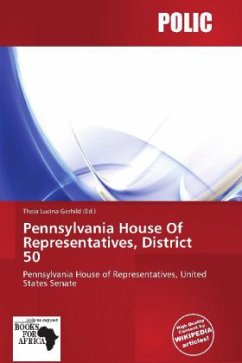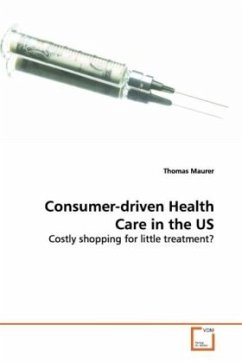
Politics and Public Health in the 50 States:
Does Citizen Ideology Impact Policy?
Versandkostenfrei!
Versandfertig in 6-10 Tagen
32,99 €
inkl. MwSt.

PAYBACK Punkte
16 °P sammeln!
In the United States certain state governments spend relatively more money than other states per capita on public health services. Why is it that some are willing to spend more to protect their respective populations? This study seeks to discover what factors impact this discrepancy, but it is most concerned with the impact of citizen ideology on funding. Is there a strong connection between the political beliefs of the citizens in a given state and their public health policy? If not, why not, and where is the disconnect? Since there is significant variation from state to state in the funding ...
In the United States certain state governments spend
relatively more money than other states per capita
on public health services. Why is it that some are
willing to spend more to protect their respective
populations? This study seeks to discover what
factors impact this discrepancy, but it is most
concerned with the impact of citizen ideology on
funding. Is there a strong connection between the
political beliefs of the citizens in a given state
and their public health policy? If not, why not, and
where is the disconnect? Since there is significant
variation from state to state in the funding of
childhood immunizations, data from a 50 state survey
of immunization program officials is used to observe
this variance. To provide context, the history and
structure of public health services, the role of
state governments, and the public health/health care
dichotomy are briefly presented. For a more in-depth
case study the text focuses on a single state,
Texas. Policy makers and concerned members of the
electorate who seek to understand factors that
influence public health policy at the state level
should find this book both informative and
provocative.
relatively more money than other states per capita
on public health services. Why is it that some are
willing to spend more to protect their respective
populations? This study seeks to discover what
factors impact this discrepancy, but it is most
concerned with the impact of citizen ideology on
funding. Is there a strong connection between the
political beliefs of the citizens in a given state
and their public health policy? If not, why not, and
where is the disconnect? Since there is significant
variation from state to state in the funding of
childhood immunizations, data from a 50 state survey
of immunization program officials is used to observe
this variance. To provide context, the history and
structure of public health services, the role of
state governments, and the public health/health care
dichotomy are briefly presented. For a more in-depth
case study the text focuses on a single state,
Texas. Policy makers and concerned members of the
electorate who seek to understand factors that
influence public health policy at the state level
should find this book both informative and
provocative.












